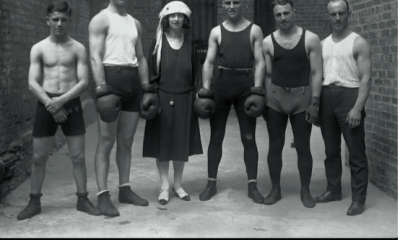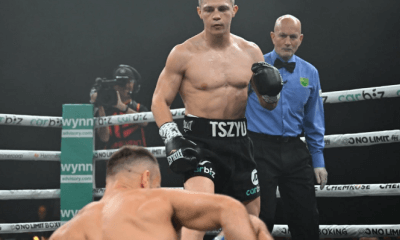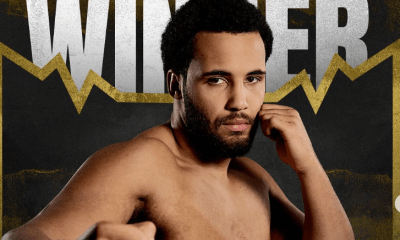Featured Articles
The Hauser Report: The Women Take Center Stage at Madison Square Garden
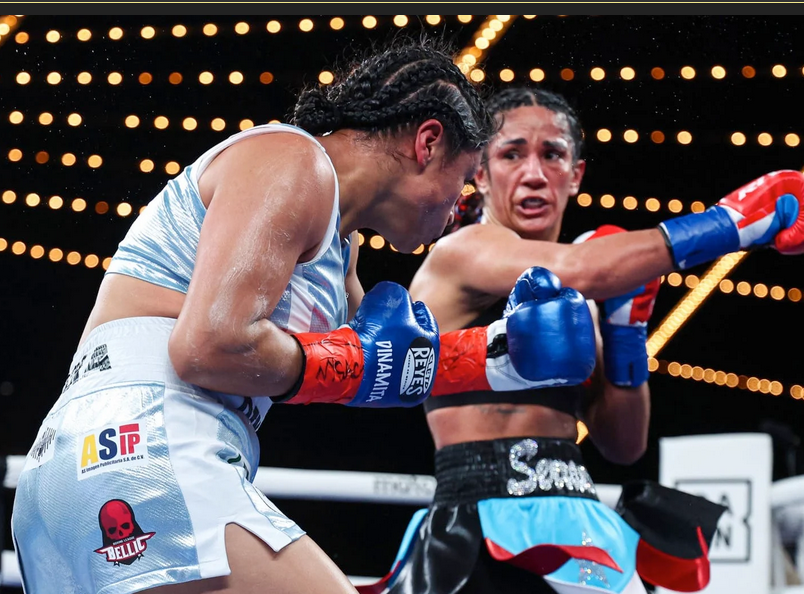
The Hauser Report: The Women Take Center Stage at Madison Square Garden
When DAZN launched in the United States in 2018, it promised subscribers “HBO-quality fights” on a monthly basis for one low monthly fee. Now its most notable offerings in America are on pay-per-view and its boxing program (as announced on January 10) includes a partnership with Misfits Boxing that will see KSI “fight exclusively on DAZN for the next five years” and a rumored series of boxing matches to be promoted by Jake Paul.
Looking at the larger picture, according to a January 11, 2023, report by Bloomberg, DAZN lost $2.33 BILLION in 2021 (a 79% increase over the previous year). That brought its total losses for the three-year period ending in 2021 to five BILLION dollars.
On February 4, DAZN limped into the Hulu Theater at Madison Square Garden with a nine-bout card promoted by Matchroom Boxing that featured five women’s bouts. Matchroom CEO Eddie Hearn was attempting to conjure up a sequel to his April 30, 2022, promotion that saw Katie Taylor vs. Amanda Serrano captivate a sold-out main arena.
Words like “massive . . .epic . . . huge” were thrown about in advance of Matchroom’s February 4 promotion. But in truth, there wasn’t much pre-fight buzz. Tickets were selling for as little as $30 and a lot of freebies were given away to fill up the Hulu Theater. Serrano vs. Erika Cruz (the main event) was a good entertaining fight. The rest of the card was a “massive” disappointment with the favored fighter (coming out of the blue corner in each instance) winning nine out of nine bouts, often in lackluster fashion.
Hearn once told British boxing writer Ron Lewis, “If I put on a bad fight, I want people to say it’s a bad fight.”
For the most part, these were bad fights.
The men fought 32 rounds and the favorite won 31 of them.
Records can be deceiving. For example, in the opening bout, Aaron Aponte (6-0-1, 2 KOs) whitewashed Joshua David Rivera (8-1, 5 KOs) over eight tedious rounds. How did Rivera get to 8-1? As of last month, his nine opponents had a composite ring record of 22 wins in 254 fights with 150 KOs by.
That was followed by Harley Mederos winning every round en route to a sixth-round stoppage of Julio Madera. Yankiel Rivera Figueroa cruised to an eight-round decision over Fernando Diaz. And Richardson Hitchins won every round on each judge’s scorecard against John Bauza.
That brings us to the women.
One of the selling points for the Matchroom card was that it featured five women’s “championship” bouts. But let’s get real. John Sheppard (who oversees BoxRec.com) reports that, as of this writing, the four major sanctioning bodies have created 1,380 different women’s titles in 15 weight divisions that they offer to promoters (for a sanctioning fee, of course). Since there are 1,909 active women boxers, this translates to 1.4 titles being available for each woman’s fight.
Two of the fights on February 4 (Amanda Serrano vs, Erika Cruz and Alycia Baumgardner vs. Elhem Mekaled) were for “undisputed world championships,” meaning that all four major sanctioning body belts were on the line. “Undisputed” also means that the ring is littered with sanctioning body officials who position themselves on camera behind the ring announcer who, in turn, is obligated to introduce each of them and reference each sanctioning body.
Title unification is significant when the fighters are legitimate champions. Otherwise, it’s simply a marketing ploy that plays into the travesty of making belts more important than fighters. The stars of Ali-Frazier I, II, and III were Ali and Frazier, not the belts they were fighting for.
And let’s not forget; one reason that promoters have started putting women fighters on their cards is that the women get paid a lot less than the men.
The first women’s fight on February 4 saw Shadasia Green (11-0), 10 KOs) take on Elin Cederroos (8-1, 4 KOs) in a scheduled ten-round super-middleweight bout. Cederos is a big strong woman without much of a punch whose career has been built in large measure on the ability to take a punch. Green has a bit of Ann Wolfe in her and punched harder than Cederroos could take. KO 6.
That was followed by back-to-back dreadful fights characterized by 30-to-1 odds favoring two protected fighters. Featherweight Ramla Ali won nine of ten rounds against Avril Mathie in an encounter marked by a conspicuous lack of action and drama with each round evocative of Groundhog Day. Then Skye Nicolson (another featherweight) decisioned Tania Alvarez over ten equally long rounds. Writer Keith Idec put that bout in perspective, describing Alvarez as having an “ineffective strange style” before adding, “She often literally ran toward Nicholson and didn’t set her feet before throwing inaccurate punches.”
Baumgardner-Mekaled was more respectable. Ten rounds for Baumgardner’s WBC, WBO, and IBF 130-pound belts plus the vacant WBA women’s junior-lightweight title. Baumgardner (an 8-to-1 favorite) scored two knockdowns and won nine of ten rounds on the judges’ scorecards. I gave her all ten.
That set the stage for Serrano-Cruz.
Serrano, age 34, has held numerous titles, some of which genuinely matter. Her fight against Katie Taylor was arguably the most important women’s boxing event ever with Taylor winning a split decision that many observers (including this one) thought should have gone the other way. That night, Amanda was remarkably gracious in defeat.
Cruz (the WBA featherweight beltholder) lacks power (3 knockouts in 17 bouts). Serrano-Cruz was for the four major featherweight belts. Amanda was a 7-to-1 favorite.
It was a good action fight.
Cruz won the first two rounds, bulling her way inside and going effectively to the body (which one doesn’t see often enough in women’s boxing). She was acquitting herself well in round three when an accidental clash of heads opened an ugly gash on her forehead. Blood flowed from the wound thereafter despite the best efforts of Erika’s cutmen to stop it.
Serrano fought Cruz’s fight for much of the night, trading punches when she could have done more to evade the blows and set up her own punches by moving and jabbing. There were more than a few firefights.
As the rounds passed, Cruz tired and began to lose form, overreaching with her punches and extending her head beyond her front knee. That left her wide open for counters. By the late stanzas, she was fighting on heart and not much more. In round ten, Erika put everything she had into going for the knockout that she knew she needed to win. But her gas tank was down to fumes and her efforts were to no avail.
Serrano won a well-earned 98-92, 98-92, 97-93 decision. Next up, a rematch against Katie Taylor on May 20 in Ireland.
* * *
In round one of Richardson Hitchens vs. John Bauza at Madison Square Garden, referee Charlie Fitch made a mistake. The fighters’ feet got tangled, Bauza went down, and Fitch mistakenly called the incident a knockdown. It had been a close round up until that point. Fitch’s call could have resulted in a three-point swing on one or more of the judges’ scorecards.
Well-run state athletic commissions rely on instant video review to remedy errors of this nature. The New York State Athletic Commission isn’t well-run. Fitch’s call was allowed to stand. It didn’t change the outcome of the fight. But it could have.
Contrast that with what happened on January 14 when Guido Vianello (a previously undefeated heavyweight being groomed by Top Rank) fought journeyman Jonathan Rice at Turning Stone Resort and Casino (a facility on Native American land in Verona, New York). Vianello was comfortably ahead on the judges’ scorecards when a sharp right hand from Rice opened a horrific gash above Guido’s left eye in round six. In round seven, the fight was stopped because of the cut.
Referee Benjy Esteves (the third man in the ring for Vianello-Rice) blew the call. It’s understandable that Fitch might not have seen two fighters get their feet tangled. Esteves, by contrast, did something that no referee should do. He ruled that Vianello’s cut had been caused by an accidental head butt that Esteves couldn’t possibly have seen because it never happened. He then told the judges to score the partially-fought seventh round after which, in his view, the winner would be determined by the scorecards. That would have led to Vianello being declared the victor.
Fortunately, the Oneida Indian Nation Athletic Commission (which oversees boxing at Turning Stone) utilizes instant video review. ESPN put the punch on a monitor at ringside for commission officials to review and the result was a TKO in Rice’s favor.
There have been complaints in the past that the 68-year-old Esteves lets fights go on too long. The most notable examples of this are his handling (or mishandling) of Magomed Abdusalamov vs. Mike Perez and Arturo Gatti vs. Joey Gamache. His ruling in Vianello-Rice raises a different issue. A referee shouldn’t call a head-butt unless he sees one. Moreover, Rice delivered the punch in question from long range, so there was no question about the cause of the cut.
Instant video review is a valuable tool. More commissions should use it.
Photo credit: Ed Mulholland / Matchroom
Thomas Hauser’s email address is thomashauserwriter@gmail.com. His most recent book – In the Inner Sanctum: Behind the Scenes at Big Fights – was published by the University of Arkansas Press. In 2004, the Boxing Writers Association of America honored Hauser with the Nat Fleischer Award for career excellence in boxing journalism. In 2019, Hauser was selected for boxing’s highest honor – induction into the International Boxing Hall of Fame.
To comment on this story in the Fight Forum CLICK HERE
-

 Featured Articles4 weeks ago
Featured Articles4 weeks agoThe Hauser Report: Zayas-Garcia, Pacquiao, Usyk, and the NYSAC
-

 Featured Articles3 weeks ago
Featured Articles3 weeks agoOscar Duarte and Regis Prograis Prevail on an Action-Packed Fight Card in Chicago
-

 Featured Articles2 weeks ago
Featured Articles2 weeks agoThe Hauser Report: Cinematic and Literary Notes
-

 Book Review2 weeks ago
Book Review2 weeks agoMark Kriegel’s New Book About Mike Tyson is a Must-Read
-

 Featured Articles4 weeks ago
Featured Articles4 weeks agoRemembering Dwight Muhammad Qawi (1953-2025) and his Triumphant Return to Prison
-
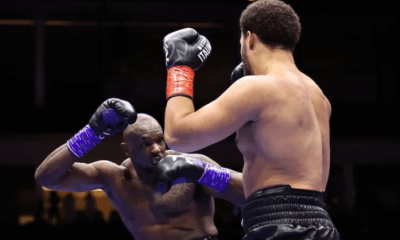
 Featured Articles7 days ago
Featured Articles7 days agoMoses Itauma Continues his Rapid Rise; Steamrolls Dillian Whyte in Riyadh
-
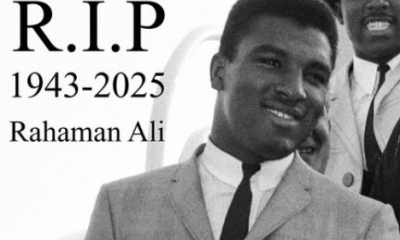
 Featured Articles3 weeks ago
Featured Articles3 weeks agoRahaman Ali (1943-2025)
-

 Featured Articles3 weeks ago
Featured Articles3 weeks agoTop Rank Boxing is in Limbo, but that Hasn’t Benched Robert Garcia’s Up-and-Comers






